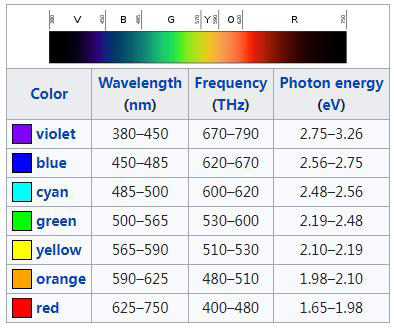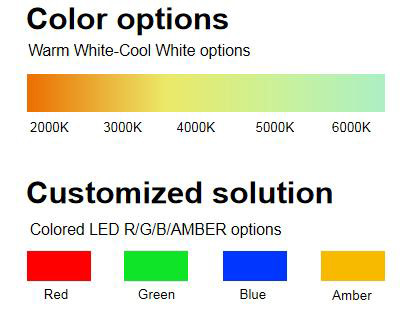Have you met with any clients asking for amber LED chips, red, blue, or other color chips? And why do they need them?
Today I want to share with you some information on this topic.
Visible Light
Light is visible (electromagnetic) radiation capable of producing direct human and animal visual sensations from which vision results. Visible light is an electromagnetic wave that can be seen by humans. Its wavelength range generally falls within 380 to 750 nm. This electromagnetic spectrum is also known as the visible spectrum. Artificial light sources are mostly electric sources, while the light they produce is basically a non-electric quantity, expressed in terms of photometric quantities and laws.
Visible radiation is assumed to contain electromagnetic waves in a very narrow range, from 380 to 750 nm. This range is perceived by our eyes, but animals can register radiation of different lengths.
There are ranges of different wavelengths in the spectrum of visible light, which the human eye perceives as different colors, e.g .:

- The range with a wavelength from 380 nm to 450 nm - violet,
- The range with a wavelength from 450 nm to 485 nm - blue,
- The range with a wavelength from 485 nm to 500 nm - green,
- The range with a wavelength from 500 nm to 565 nm - yellow,
- The range with a wavelength from 565 nm to 625 nm - orange,
- The range with a wavelength from 625nm to 750 nm - red.
We see best in the middle of the visible spectrum and worst at the ends of the range.
Understanding that different colored lights have different effects on human beings and animals can help us win more lighting projects and work better with our clients.
What’s more, different areas and times need different color LEDs. Light pollution affects human beings and animals greatly. Reduction in light pollution and improves visibility for telescopes due to isolating blue wavelength in red and amber colors. Amber color lighting is also wildlife-friendly specifically for coastal areas.
Protecting Coastal Habitats With Amber LED Lights
The color amber is a pure chroma color, located on the color wheel midway between the colors of yellow and orange. The color name is derived from the material also known as amber, which is commonly found in a range of yellow-orange-brown-red colors; likewise, as a color amber can refer to a range of yellow-orange colors.
Research has shown that sea turtles are less affected by lighting within specific wavelengths. Long-wavelength lighting such as Amber LEDs is less disruptive than white light. Typical area and site lighting producing white light contains higher blue content and can confuse baby hatchlings who rely on moonlight to guide them toward the water. Amber LED sources that are low-glare and properly shielded help minimize this confusion.
AGC provides various color LED lighting solutions, welcome to discuss with us to get the exact light you want and protect our environment at the same time.













